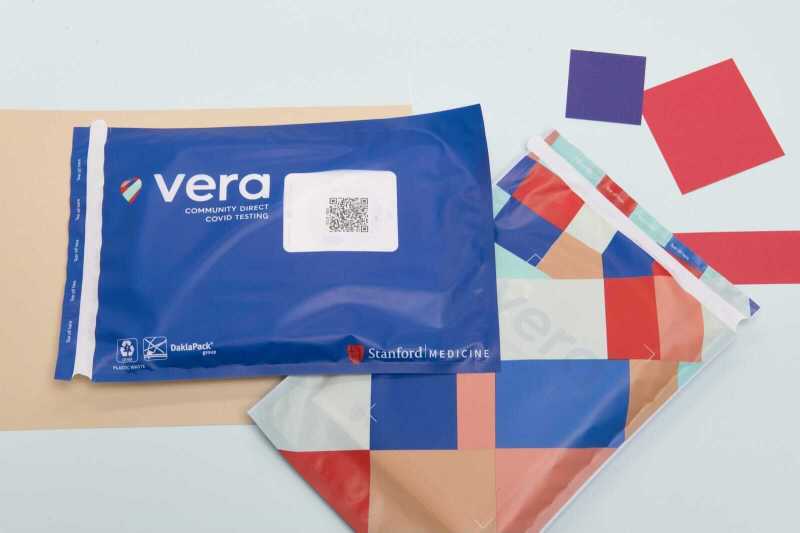A Stanford-created self-swab COVID-19 test kit was approved by the Food and Drug Administration (FDA) on Nov. 24. The clearance allows Stanford researchers working on the Community Alliance to Test Coronavirus at Home (CATCH) study to use, distribute and expand their outreach with the kits.
“It has been a real team effort in creating this,” said CATCH study Director Patrick Arensdorf M.S. ’04, who added that the goal of the kit was to be user-friendly and easy for any lab to process. “The thing that makes me the proudest with this kit is the simplicity of it,” he said.
On the user end, the process is designed to be simple and fast, taking at most two days— one day for the user to collect their sample with the swab and mail it to the lab and another to process the results.
In a pilot usability study involving 43 people, all participants were able to successfully collect their samples, allowing the kit to receive emergency use authorization (EUA) from the FDA, according to Arensdorf.
The Vera Program and CATCH study team members include professor of pediatric infectious diseases health research and policy Yvonne Maldonado, professor of bioengineering and applied physics Stephen Quake ’91 M.S. ’91, and associate professor of health research and policy Lorene Nelson, working in collaboration with the Chan Zuckerberg Biohub.
The same Stanford group also developed the Vera Cloud Testing Platform — a COVID-19 testing tool and platform that allows organizations to expand their testing, screening and surveillance programs.
“Since the early days of this pandemic, Stanford has recognized how crucial testing is, and will continue to be, as we navigate the COVID-19 crisis,” Stanford University School of Medicine Dean Lloyd B. Minor said on the Vera Website. “The Vera platform is a huge step forward in our goal to bring widespread testing not just to individuals in our community but throughout the country.”
The CATCH Study will serve all adult residents in the Greater San Francisco Bay Area, which is an 8.5 million population area that includes 12 counties and 13 public health offices. CATCH Study outreach is expanding quickly, according to Aresndorf.
Individuals collect an unsupervised nasal swab sample and mail the swabs to the Stanford Health Care Virology Laboratory. Using the Vera Cloud Platform and data analytics, researchers test for COVID-19 and compare the positivity data across demographic factors to address the spread and infection rates of the virus in different locations.
Vice Chair of Clinical Affairs and Medical Director of Stanford Health Care’s Pathology Department Christina Kong ’88 emphasized the benefit of the self-swab kit over traditional tests.
“The good thing about a kit like this is that you don’t need a healthcare worker supervising when people are administering it to themselves,” Kong told The Daily. “The plan from here is to figure out how to put this kit on a large platform and the best uses for the Vera platform and Vera collection kit in the future.”
The Chan Zuckerberg Biohub at Stanford — which works on a variety of similar medical projects throughout the year — funded the creation of the kit. Researchers also partnered with New Valence, Microsoft, Gus Surgical and IX Layer to advance the project.
From here, Aresndorf said the researchers plan to continue outreach to underserved and minority groups in California as well as expand testing capabilities out-of-state and nationwide.
Contact Katrina Machetta at katrinam ‘at’ missstem.org.
